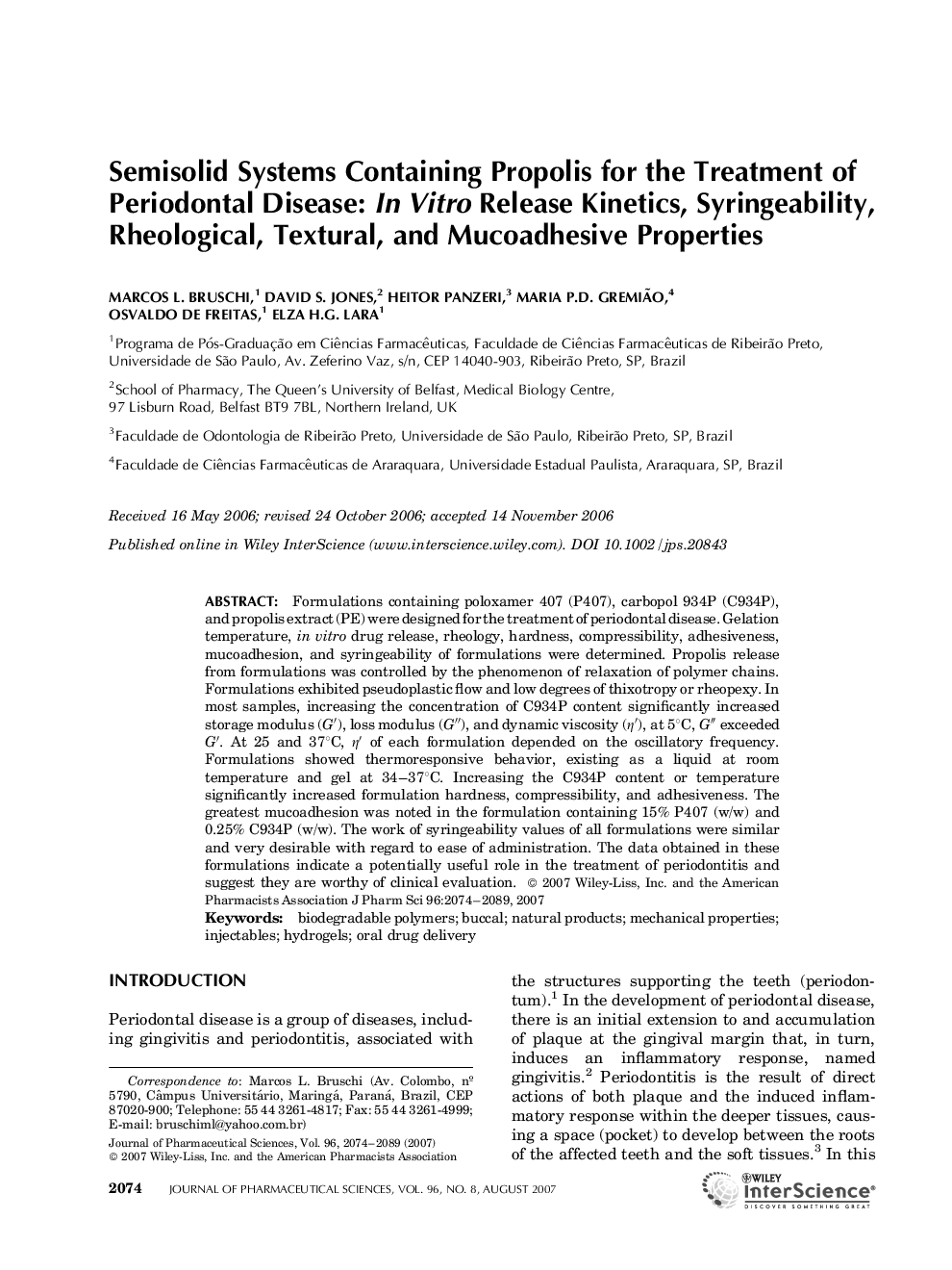| Article ID | Journal | Published Year | Pages | File Type |
|---|---|---|---|---|
| 2486117 | Journal of Pharmaceutical Sciences | 2007 | 16 Pages |
Abstract
Formulations containing poloxamer 407 (P407), carbopol 934P (C934P), and propolis extract (PE) were designed for the treatment of periodontal disease. Gelation temperature, in vitro drug release, rheology, hardness, compressibility, adhesiveness, mucoadhesion, and syringeability of formulations were determined. Propolis release from formulations was controlled by the phenomenon of relaxation of polymer chains. Formulations exhibited pseudoplastic flow and low degrees of thixotropy or rheopexy. In most samples, increasing the concentration of C934P content significantly increased storage modulus (Gâ²), loss modulus (Gâ³), and dynamic viscosity (ηâ²), at 5°C, Gâ³ exceeded Gâ². At 25 and 37°C, ηⲠof each formulation depended on the oscillatory frequency. Formulations showed thermoresponsive behavior, existing as a liquid at room temperature and gel at 34-37°C. Increasing the C934P content or temperature significantly increased formulation hardness, compressibility, and adhesiveness. The greatest mucoadhesion was noted in the formulation containing 15% P407 (w/w) and 0.25% C934P (w/w). The work of syringeability values of all formulations were similar and very desirable with regard to ease of administration. The data obtained in these formulations indicate a potentially useful role in the treatment of periodontitis and suggest they are worthy of clinical evaluation. © 2007 WileyâLiss, Inc. and the American Pharmacists Association J Pharm Sci 96:2074-2089, 2007
Keywords
Related Topics
Health Sciences
Pharmacology, Toxicology and Pharmaceutical Science
Drug Discovery
Authors
Marcos L. Bruschi, David S. Jones, Heitor Panzeri, Maria P.D. Gremião, Osvaldo de Freitas, Elza H.G. Lara,
